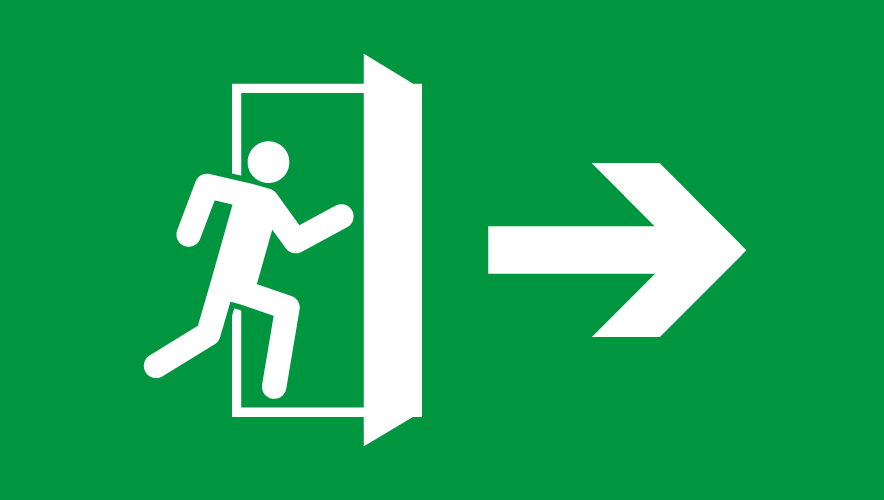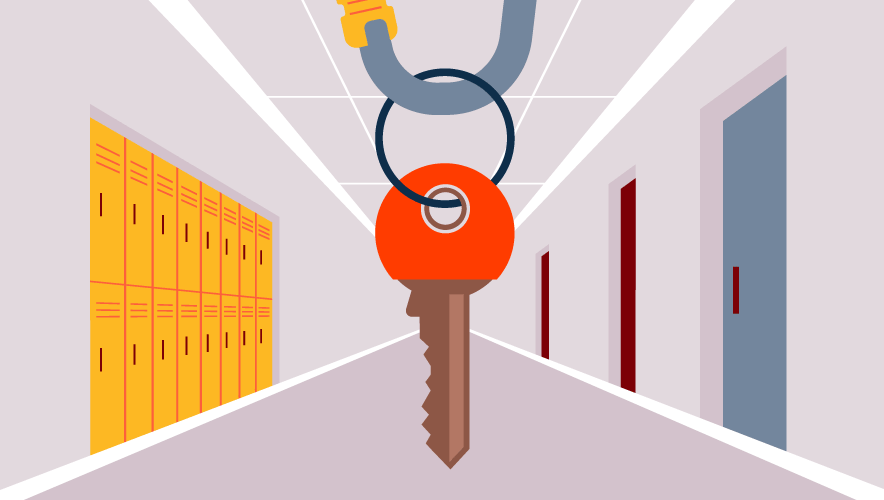Opening the Conversation to Code-Compliant School Security
Creating safer and more secure schools involves several communities: architecture and design, security, governmental bodies, and education administration, as well as students and their families. When these stakeholders work together, they can ensure a school building can delay the access of intruders while also readily allowing free egress during a fire event or other emergencies.
The need to collaborate is especially important for the U.S. architectural and security communities when designing door systems, because enhanced security can often appear to be at odds with maintaining free egress and the accessibility requirements outlined in the Americans with Disabilities Act (ADA) Standards for Accessible Design. Security professionals can make more informed recommendations for the schools they protect when they know how security goals and building codes intersect.
Codes to Know: Free Egress, Fire Safety, and Accessibility
According to the Partner Alliance for Safer Schools (PASS) K-12 guidelines, enhancing school security can include access control and the use of security-rated products. Both approaches have the potential to run counter to code-required accessibility and free egress when PASS recommendations and code requirements are not considered.
For example, for ADA compliance an occupant must be able to operate the hardware with one hand and without tight grasping, pinching, or twisting of the wrist. These doors must also be able to be opened with five pounds of force or less. Latches and locks with small parts as well as hardware that requires simultaneous actions are less desirable, though they may be allowed in some cases.
Regardless, improving school security should not sacrifice fire and life safety code requirements. For security professionals, that most commonly means maintaining free egress and understanding fire ratings. “Free egress” refers to the safe and unrestricted ability to evacuate a building. Doors along paths of egress must be unlocked and operable with a single motion in the direction of egress. Often, this necessitates the use of panic hardware.
Likewise, building materials on these paths must often meet fire-rated standards. Though security professionals do not necessarily need to know the specifics of these codes, identification of designs and products that may compromise fire and life safety can support more holistic security recommendations. Being able to identify when code-compliance consultation might be necessary, then, is an important part of bolstering overall school security.
Devices to Avoid, Designs to Embrace
Several designs and devices, while they support security goals, might compromise a building’s ability to be code compliant. Barricade devices are perhaps the most infamous. These devices are designed to secure openings from intruders. However, some of these retrofit devices do not meet ADA standards and may inhibit free egress, so code compliance must be considered when making security recommendations.
Further, as noted by building code experts with PASS, the International Code Council, and the Sandy Hook Advisory Commission, code-compliant locking hardware is often adequate for delaying and deterring intruders, making barricade devices both extraneous and potentially hazardous.
Likewise, the use of mantraps (another term for an interlock) is often not code compliant for educational occupancies. Interlocks are a group of two or more doors that are part of a vestibule. When one door is open, the other doors cannot be opened. When placed along paths of egress, this configuration limits and delays egress, potentially creating dangerous situations. Instead, security professionals should opt to recommend secure entry vestibules, which include two sets of doors that delay access and can be monitored from a secure location—usually a main office. These vestibules allow free egress at all times, so while entry is controlled, individuals can quickly exit facilities.
In these guidelines, it is noted that a multilayered approach to school safety is an effective way to delay intruders. While this means taking security measures from the property line to deep within the school, it also means ensuring adjacent systems support each other’s effectiveness. For vestibules and other areas within the building, security-rated glazing components can support locking hardware and maintain the ability to visually assess incoming threats.
The Importance of Component Compatibility
In educational settings, there may be areas that require both enhanced security and code-driven fire and life safety. In these applications, understanding product limitations and their effect on fire ratings is essential to making the most informed security recommendations.
For example, the PASS K-12 guidelines list security films as a baseline for more secure entry vestibules, which may lead people to believe that these products can enhance or provide bullet-resistant ratings for nonrated glazing—wherever it may be installed throughout the building.
While this film does slow down intruders (an important aspect of school security), it does not make glass bullet-resistant. According to Darrell Smith, executive director of the International Window Film Association, these films are not tested to be bullet resistant. Instead, they hold the glass together to slow down entry into the building and reduce spalling, when debris and shards break off from the glass after an impact. As such, school administrators and security professionals should determine the exact type of protection that fits their goals.
For applications within a building, these films and security-rated glazing components are usually not tested to fire-rated standards. In fact, many are plastic based and can burn quickly and intensely, easily surpassing the parameters of fire testing standards. As such, they can reduce or negate a fire-rated assembly’s ability to perform as intended.
Educational occupancies in some locations may have more stringent fire-rated requirements, increasing the chances that an area will need to provide multiple forms of protection simultaneously. In these situations, it is important that security-rated assemblies have either passed the fire test as a system or incorporate components known to be compatible. Security professionals should work with design teams and Authorities Having Jurisdiction to ensure that one form of defense is not sacrificed for another.
Collaboration Is Key for Safer School Design
Due to the complexity of school safety and security, a collaborative approach to security recommendations may be a security professional’s most valuable tool. This can involve conversations with administrators and parents on the scope of security upgrades as well as vetting recommendations through building code experts to ensure accessibility and free egress are maintained. Doing so will not only ensure more secure schools but will also help protect lives in the event of an emergency.
Devin Bowman is general manager of technical glass products and AD Systems for Allegion. With nearly 20 years of industry experience, Bowman is actively involved in advancing fire and life safety codes and sits on the Glazing Industry Code Committee. Email: [email protected] Contact him at (800) 426-0279.

















